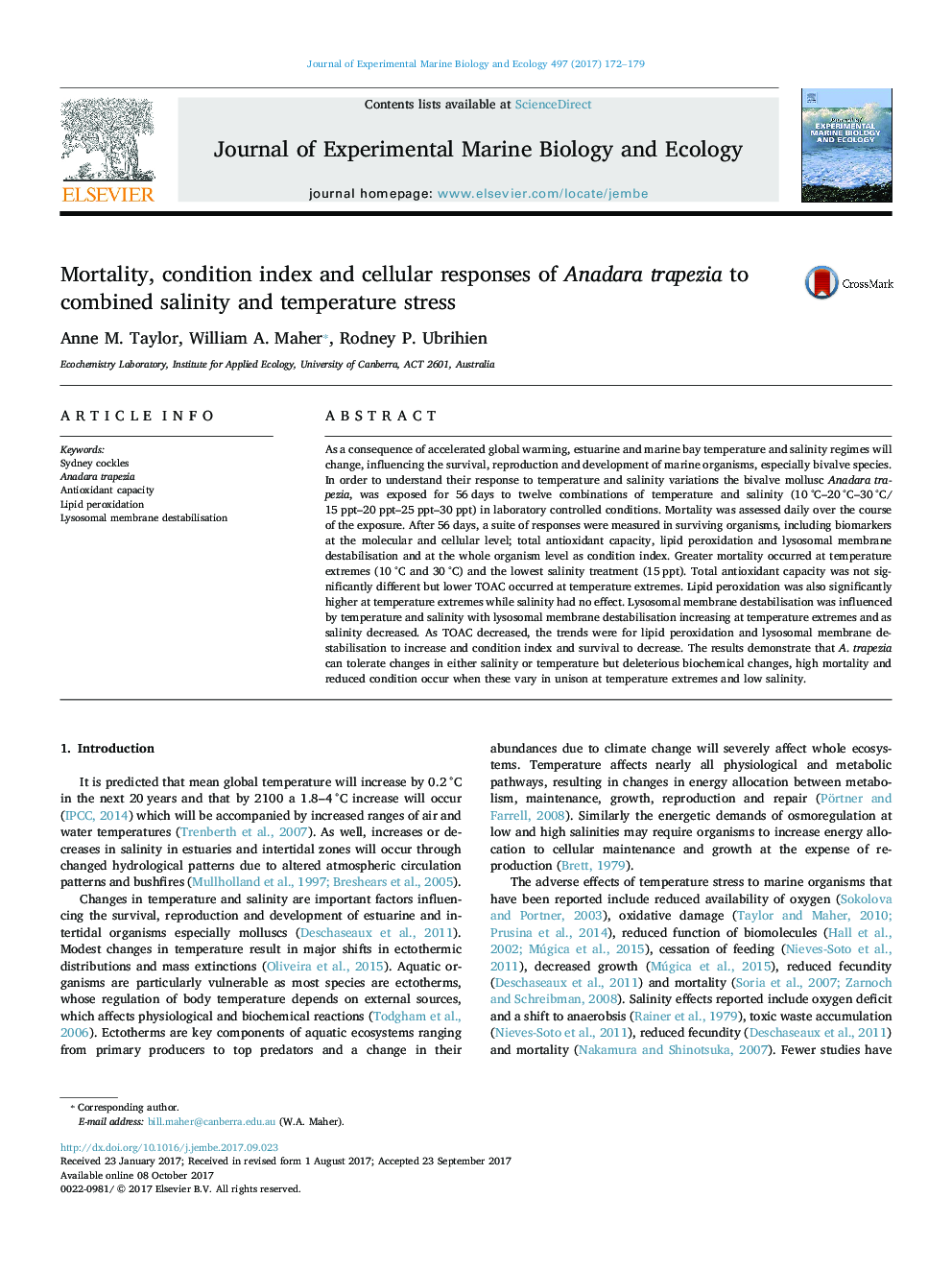| کد مقاله | کد نشریه | سال انتشار | مقاله انگلیسی | نسخه تمام متن |
|---|---|---|---|---|
| 5744445 | 1618378 | 2017 | 8 صفحه PDF | دانلود رایگان |
- Anadara trapezia, was exposed for 56 days to eighteen combinations of temperature and salinity (10°C-20°C-30°C/15ppt-20ppt-25ppt-30ppt.
- Greater mortality occurred at temperature extremes and the lowest salinity treatment.
- As total antioxidant capacity decreased, lipid peroxidation and lysosomal destabilisation increased and condition index and survival decreased.
- A. trapezia can tolerate changes in either salinity or temperature but high mortality and reduces condition occur when these vary in unison at temperature extremes and low salinity.
As a consequence of accelerated global warming, estuarine and marine bay temperature and salinity regimes will change, influencing the survival, reproduction and development of marine organisms, especially bivalve species. In order to understand their response to temperature and salinity variations the bivalve mollusc Anadara trapezia, was exposed for 56 days to twelve combinations of temperature and salinity (10 °C-20 °C-30 °C/15 ppt-20 ppt-25 ppt-30 ppt) in laboratory controlled conditions. Mortality was assessed daily over the course of the exposure. After 56 days, a suite of responses were measured in surviving organisms, including biomarkers at the molecular and cellular level; total antioxidant capacity, lipid peroxidation and lysosomal membrane destabilisation and at the whole organism level as condition index. Greater mortality occurred at temperature extremes (10 °C and 30 °C) and the lowest salinity treatment (15 ppt). Total antioxidant capacity was not significantly different but lower TOAC occurred at temperature extremes. Lipid peroxidation was also significantly higher at temperature extremes while salinity had no effect. Lysosomal membrane destabilisation was influenced by temperature and salinity with lysosomal membrane destabilisation increasing at temperature extremes and as salinity decreased. As TOAC decreased, the trends were for lipid peroxidation and lysosomal membrane destabilisation to increase and condition index and survival to decrease. The results demonstrate that A. trapezia can tolerate changes in either salinity or temperature but deleterious biochemical changes, high mortality and reduced condition occur when these vary in unison at temperature extremes and low salinity.
Journal: Journal of Experimental Marine Biology and Ecology - Volume 497, December 2017, Pages 172-179
